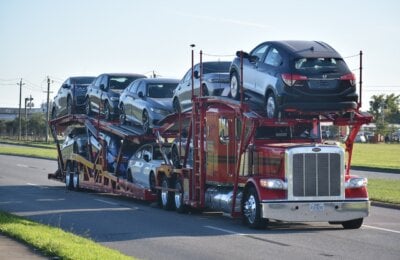
Reading Time: 12 minutes
Do you want to know how to Move a Classic Car Like a Pro?
Are you ready to hit the road with your vintage beauty? Transport your classic car with confidence using our expert tips and tricks.
How to Move a Classic Car Like a Pro | Rev Your Engines
Are you the proud owner of a classic car? Have you just acquired a vintage beauty? Maybe you have been lovingly restoring one for years? Regardless, one of the biggest challenges you’ll face is transporting it safely and securely to its new home.
How do people move their cars? Are you tempted to load it up on a trailer and hit the open road? Moving a classic car is a delicate process that requires the right equipment, expertise, and care. These cars don’t really make it to the top of our most fuel efficient cars list… That’s where a specialized classic car transport company comes in. In this article, we’ll explore the ins and outs of classic car transport. Finally, we provide tips and best practices for moving your prized possession with confidence.
From the different types of transport equipment to the regulations and costs involved, we’ve got you covered. So buckle up and get ready for a fun and informative ride!
Types of Classic Car Transport Equipment
When it comes to transporting classic cars, there are different types of transport equipment to choose from. When you know how to move a classic car, the type of equipment you choose will depend on certain factors:
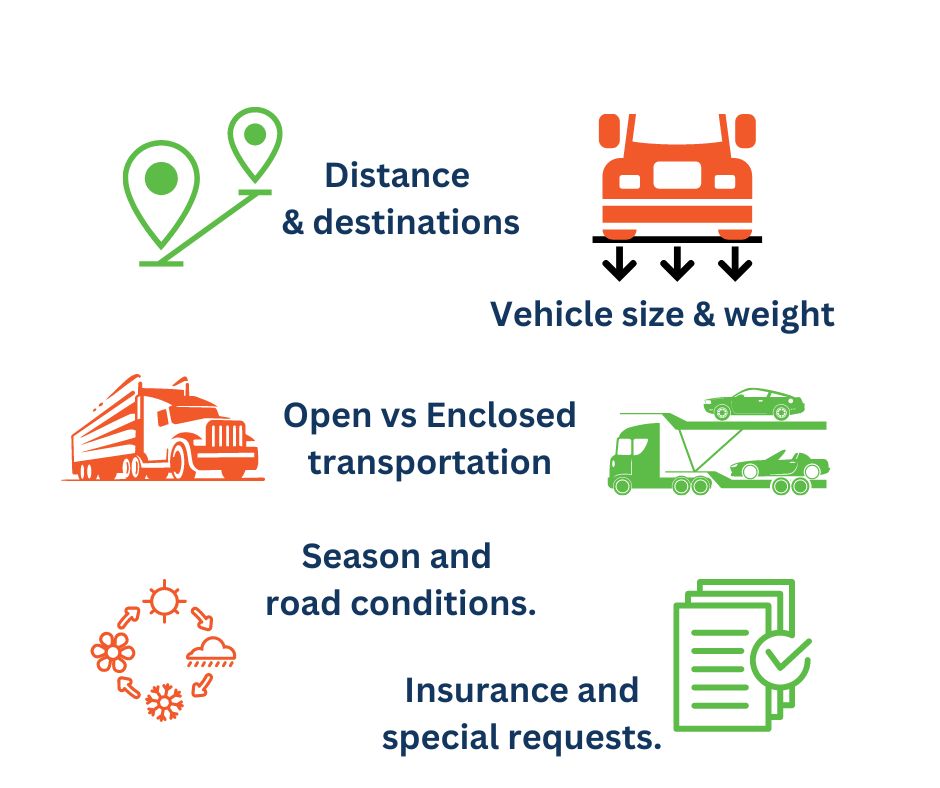
- the distance of the transport
- the level of protection and security you require
- and the type of classic car you own.
Here are some of the most common types of equipment used for classic car transport.
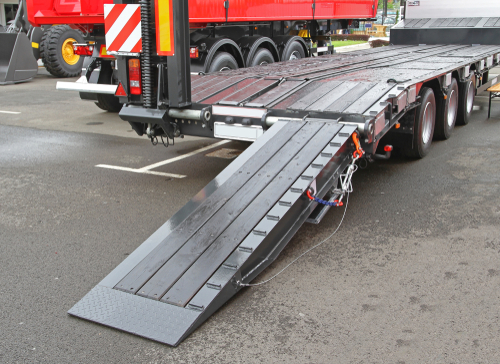
Flatbed Trailers
Flatbed trailers are open trailers that offer easy loading and unloading of classic cars. They are ideal for short to medium distance transport. What’s more, they can be a more cost-effective option than enclosed trailers. However, they do not provide the same level of protection as enclosed trailers. This leaves classic cars exposed to weather and road debris.
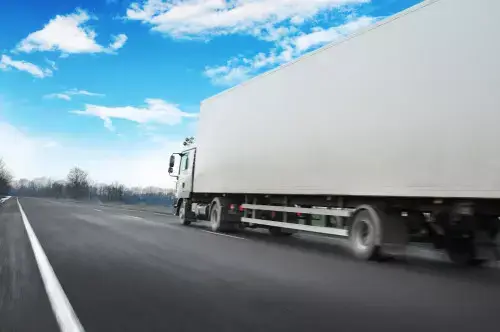
Enclosed Trailers
How to move a classic Car? Enclosed trailers are fully covered trailers that provide maximum protection and security for classic cars. They are ideal for long distance or cross-country transport. This is because they offer complete protection against weather and road debris. Classic car enclosed transport may be more expensive than flatbed trailers. Still, they are well worth the investment if you own a rare, valuable or fragile classic car.
Lift Gates and Special Ramps
Lift gates and special ramps are used to load and unload classic cars onto transport trailers. They are essential equipment when it comes to classic car transport. They ensure that the vehicle is safely and securely loaded onto the trailer without any damage or scratches. Lift gates and special ramps may be necessary for classic cars with a low ground clearance. They also get used when a car cannot be driven onto the trailer. (See this article on shipping a non-runner).
At Nationwide Auto Transportation, we know how to move a Classic Car. We have a range of specialized transport equipment to suit your classic car transport needs. Our fleet includes both flatbed and enclosed trailers. We also use lift gates and special ramps. This ensures that your classic car is loaded and unloaded with the utmost care and precision.
Regulations for Transporting Classic Cars
When it comes to How to Move a Classic Car, there are several regulations that you need to be aware of to ensure safe and legal transport. These regulations include federal and state laws. Fun fact, there are different requirements for insurance and licensing.
Federal Regulations
The Federal Motor Carrier Safety Administration (FMCSA) regulates the transportation of goods, including classic cars, in interstate commerce. Under federal law, classic cars must be secured with appropriate equipment and must be transported by qualified drivers who meet specific training and licensing requirements.
Carriers must also comply with strict safety regulations, including vehicle inspections, maintenance and repairs, and hours of service limits.
State Regulations
In addition to federal regulations, each state has its own set of rules and regulations for the transport of classic cars.
EXAMPLE: Some states may require special permits for oversized or overweight trailers. They may also have restrictions on the times of day when oversized loads can be transported. It is important to research and understand the specific regulations in your state. Not only yours, but also the states you will be traveling through. This will ensure legal and safe transport.
Requirements for Insurance and Licensing
Classic car transport companies must be properly licensed and insured to operate. This includes obtaining the necessary permits and licenses for interstate commerce.
Further they have to maintain liability and cargo insurance. This is done to protect against accidents, damage, or theft during transport. It is important to verify that your chosen transport company is properly licensed and insured. Obviously, you want to make 100% sure that your classic car is protected throughout the transport process.
At Nationwide Auto Transportation, we take pride in our compliance. Not only with federal and state regulations, but also our commitment to maintaining what is needed. This includes the necessary insurance and licenses to ensure a safe and legal transport for your classic car.
For more information on the specific regulations and requirements for classic car transport, check out our Classic Car Transport page on our website.
Best Practices for Transporting Classic Cars
When it comes to transporting your classic car, following best practices can help ensure that your vehicle arrives safely and in the same condition as when it was picked up. Always consider these car care and maintenance best practices..
Preparing the Vehicle for Transport
Before sending your classic car off to the transport company, give it a little extra TLC.
- Check the fluid levels
- Inspect the tires and brakes
- Give your classic car a good wash and wax so that it’s looking its best for the journey.
Choosing a Transport Company
When selecting a transport company, do your research and choose a company with experience transporting classic cars. You want a company that is properly licensed and insured. Look for one with a proven track record of getting vehicles to their destinations on time and in great condition.

Documenting the Condition of the Car
Take pictures and document the condition of your classic car before it goes on the transport truck. This can help identify any new damage that may occur during transport and help with insurance claims. Plus, it’s a great excuse to spend some quality time with your classic car before you say goodbye.
Communicating with the Transport Company
Stay in touch with your transport company. Inform the company of any special demands you may have. Are you feeling a little paranoid about your ride? Give them a call and ask for updates along the way. It’s your car, after all!
Follow these best practices to help ensure a safe and secure transport for your classic car. At Nationwide Auto Transportation, we specialize in the transport of classic cars. We have the experience, equipment, and expertise to get your ride to its destination with care and precision.
Contact us today to learn more about our classic car transport services. Finally, don’t forget to give your classic car an extra hug before it goes on the truck!
How To Drive A Classic Car?
You should know How to Drive a Classic Car before considering buying one. Driving a classic car can be a thrilling experience. Still, it’s important to remember that these beauties require a little extra TLC on the road.
Here are some tips to drive a classic car like a pro.

Mind the Clutch
Many classic cars have manual transmissions, so it’s important to practice clutch control. Take some time to get used to the clutch’s engagement point. Practice shifting smoothly to avoid jerky starts and stalls.

Take It Easy
Classic cars were built in a time when seat belts were optional. This makes it important to keep your speed in check. Take your time and enjoy the ride, and don’t be afraid to take the scenic route.
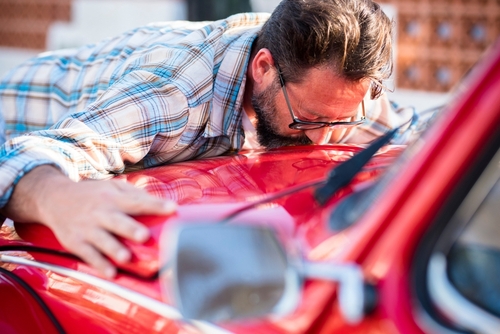
Keep Up with Maintenance
Classic cars require regular maintenance to keep them running smoothly. Stay on top of things like oil changes and tune-ups. These cars were built to last, but they need a little extra care and attention to stay in top condition.

Be Prepared
Classic cars can be temperamental. This makes it a good idea to carry some basic tools and spare parts with you, just in case. A spare tire and a can of Fix-A-Flat can be lifesavers on a long road trip.

Look the Part
When driving a classic car, it’s important to look the part. Dress to impress! Don’t forget the classic car essentials like a pair of driving gloves and stylish shades. Unless you’re going for the understated ruggedly handsome vibe…
Follow these tips to enjoy driving your classic car to the fullest, while keeping it in top condition. So, what do you do when you need to transport your classic car? Be sure to choose a transport company with experience and expertise in handling these special vehicles, like Nationwide Auto Transportation.
How Can I Improve My Classic Car Handling?
Driving a classic car can be an exhilarating experience. Still, it’s important to remember that these cars require a little extra care and attention on the road. Here are some tips for improving your classic car handling.
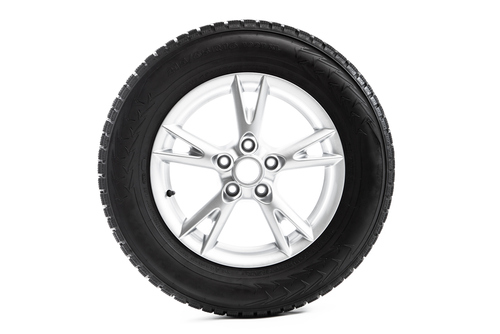
Invest in Good Tires
The right tires can make all the difference when it comes to handling your classic car. Choose tires that are appropriate for your car’s weight and size, and be sure to keep them properly inflated.
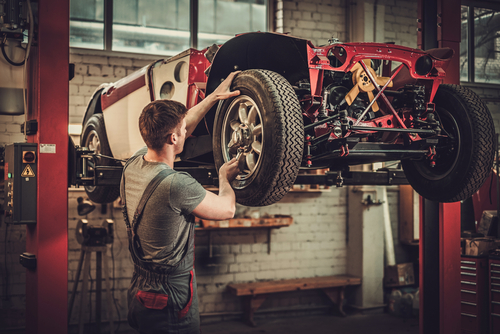
Upgrade the Suspension
Upgrading your classic car’s suspension can improve handling and stability, especially when cornering. Consider installing a modern suspension system to give your car better handling capabilities.
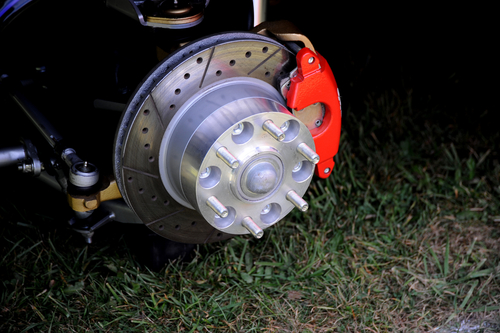
Fine-Tune the Brakes
Good brakes are essential for safe and confident driving. Consider upgrading your classic car’s braking system with modern components, such as disc brakes, to improve braking performance.
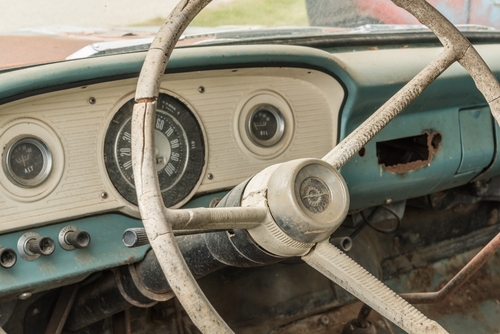
Add Power Steering
Adding power steering to your classic car can make steering easier and more responsive, especially at low speeds. This can greatly improve your car’s handling and make it more enjoyable to drive.

Practice, Practice, Practice
Finally, the best way to improve your classic car handling is through practice. Take your car out for regular drives and get used to its handling characteristics. With practice, you’ll become more comfortable and confident behind the wheel.
Can You Daily Drive a Classic?
Yes, it’s possible to daily drive a classic car. However, it requires extra care and attention due to the age and unique features of the car. Regular maintenance, careful driving, and a willingness to accept the quirks of an older vehicle are all important factors to consider.
What Is The Easiest Classic Car To Work On?
The easiest classic car to work on will depend on individual experience and preference. Obviously the specific make and model of the car plays a large part. However, some popular choices among classic car enthusiasts for ease of maintenance and availability of parts include:
- the first-generation Ford Mustang
- Volkswagen Beetle
- Chevrolet C10 pickup truck.
Questions to Ask When Considering Classic Car Transport
It is crucial to choose the right transport company when it comes to transporting your classic car. Here are some important questions to ask to see to it that your vehicle is transported safely.
What type of equipment do you use to transport classic cars?
Enclosed or open trailers? Flatbed? It’s important to choose a transport company that has the appropriate equipment to transport your classic car. Whether it’s an enclosed trailer for added protection, or a flatbed for easy loading and unloading.
Do you have experience transporting classic cars?
Classic cars require extra care and attention. Thus it’s key to choose a transport company that has experience in transporting these unique vehicles. Don’t just search classic car transport near me, and choose the first one.
How do you secure and protect the car during transport?
It’s important to choose a transport company that takes the necessary steps to secure and protect your classic car during transport. This includes things such as using soft straps and special handling procedures.
Will the car be driven or will it be transported on a trailer?
Transporting a classic car on a trailer is the safest option. It eliminates the risk of wear and tear from driving on the road.
Are you familiar with any specific regulations that need to be followed for transporting a classic car?
Depending on the car’s make, model, and age, there may be specific regulations that need to be followed during transport. A knowledgeable transport company can ensure that all regulations are followed.
Always get a reference
It’s always a good idea to ask for references from previous clients. This is to get an idea of the transport company’s track record and level of service.
How do you handle damaged or missing items?
It’s important to know how the transport company handles any damage or missing items during transport. Be prepared in case of any issues.
How will you keep me updated on the status of the transport?
Communication is key during the transport process. So, choose a transport company that provides regular updates on the status of your classic car.
Can you provide a detailed quote that includes the cost of transport and any additional fees or services?
Get a clear and detailed quote upfront to avoid any surprise charges or hidden fees.
Choose a reliable and experienced transport company like Nationwide Auto Transportation. Ask these questions for peace of mind. Know that your classic car is transported safely and arrives at its destination in the same condition as when it was picked up.
Factors That Affect Classic Car Transport Cost
When it comes to transporting a classic car, the cost can vary depending on several factors. Here are some of the main factors that can affect the cost of classic car transport:

Distance
The distance that your classic car needs to be transported can greatly affect the cost. Longer distances generally result in higher costs, as more time and fuel are required to transport the car.

Type of transport
The type of transport you choose can also affect the cost. Open transport is generally less expensive than enclosed transport, but may not provide as much protection for your classic car.

Time of year
The time of year can also impact the cost of classic car transport. High-demand seasons, such as summer, may result in higher prices due to increased demand and limited availability.

Vehicle condition
The condition of your classic car can also affect the cost of transport. If your car is not in running condition, it may require special equipment or handling, which can increase the cost.

Insurance
The level of insurance coverage you choose can also affect the cost. Higher levels of insurance coverage can result in higher costs, but may provide greater protection for your classic car.

Additional services
Some transport companies may offer additional services, such as door-to-door transport or expedited delivery, which can also affect the cost of transport.
The Pros and Cons of Open and Enclosed Trailers For Classic Car Transport
| Transport Type | Pros | Cons |
| Open Trailer | Lower cost compared to enclosed trailersEasy to find carriers with open trailersGood for short to medium distance transport | Exposed to weather and road debrisMay not offer as much protection as enclosed trailersNot ideal for long distance or cross-country transport |
| Enclosed Trailer | Maximum protection against weather and road debrisIdeal for long distance or cross-country transportOffers added security with locks and alarmsIdeal for valuable or rare classic cars | Higher cost compared to open trailersMay not be as easy to find carriers with enclosed trailersMay require special permits and regulations for oversized or overweight trailers |
It’s important to keep these factors in mind when considering classic car transport, and to choose a transport company that offers transparent pricing and clear communication about any additional fees or charges.
Expertise in Classic Car Transport
By now you should know how to move a classic car from A to B. At Nationwide Auto Transportation, we understand the importance of safe and secure transportation for your classic car. Our experienced team has a proven track record of successfully transporting classic cars across the country. We take great pride in providing specialized care and attention to every vehicle we transport.
Our team of drivers has extensive experience in transporting classic cars. Further, we ensure that they are properly trained and equipped to handle the unique needs of these vehicles. We use specialized equipment, such as enclosed trailers and lift gates. This is to ensure that your classic car is protected throughout the entire transportation process.
In addition, we are fully licensed and insured! We provide you with peace of mind that your classic car is protected in the event of any unexpected incidents. We also ensure that all federal and state regulations are followed during transport. Now you can rest assured that your classic car is in good hands.
How to Move a Classic Car + Stress Free = Nationwide Auto Transportation
At Nationwide Auto Transportation, we understand that your classic car is more than just a vehicle! It’s a valuable and cherished possession. For some people it is even a way of life, and borders on addiction. To learn how to have proper regard for her, read how you take care of a classic car.
That’s why we go all the way to make sure that it arrives at its destination safely. And obviously in the same condition as it was when it was picked up. You can rely on us to handle your classic car transport needs with the expertise and care it deserves.
Don’t trust your classic car transport to just any classic car carrier. Choose Nationwide Auto Transportation for a stress-free and reliable transport experience. Contact us today to get started!
And did you know? We’re considered the best auto transporter for students…. Check out our blog to learn more!

